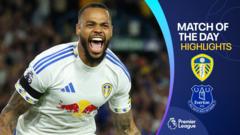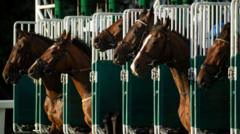Why Are Young American Men Turning to Russian Churches for Manliness?

Exploring the Rise of Orthodox Christianity Among Modern American Men
In recent years, a notable shift has taken place within the religious landscape of the United States, particularly among men seeking a sense of purpose and community. The Orthodox Christian Church, specifically the Russian Orthodox Church Outside Russia (ROCOR), has witnessed a surge in male converts, many of whom are drawn to a more traditional and, at times, hyper-masculine portrayal of faith. This trend is epitomized by figures like Father Moses McPherson, who not only encourages an unapologetic masculinity but also promotes an austere lifestyle steeped in traditional values. In this article, we will delve into the factors contributing to this phenomenon, the implications for faith communities, and what this means for the broader cultural landscape in America.
Understanding the Appeal of Orthodox Christianity
At the core of the rising interest in Orthodox Christianity among men lies a deep yearning for authenticity in a rapidly changing world. Many men feel alienated by contemporary societal norms that often challenge traditional masculinity. The appeal of Orthodox Christianity lies in its rich history, ritualistic practices, and a strong sense of community that many modern men find lacking elsewhere.
Resistance to Modern Masculinity
Father Moses McPherson’s approach is characterized by a rejection of what he deems as overly feminized expressions of masculinity. In his sermons, he advocates for a return to more traditional masculine roles, emphasizing the importance of strength, responsibility, and leadership within the family unit. This perspective resonates with many men who feel marginalized by modern societal expectations.
In his view, practices such as wearing skinny jeans, emotional expression, or engaging in household chores are seen as indications of a feminized culture that undermines the core tenets of masculinity. Instead, he promotes a vision of manhood that is rugged, self-sufficient, and deeply religious.
The Role of Community and Tradition
For many converts, the Orthodox Church represents a refuge from the chaos of modern life. The community aspect is particularly appealing; the church offers a supportive environment where men can connect with like-minded individuals who share their values. This sense of belonging is vital for those who may feel isolated in their daily lives.
In addition to community, the rituals and traditions of Orthodoxy provide a structure that many find comforting. The liturgical calendar, fasting periods, and sacramental life create a rhythm that serves as a foundation for spiritual growth. This connection to a historical faith tradition appeals to men seeking deeper meaning and purpose.
The Influence of the Pandemic
The COVID-19 pandemic has profoundly impacted religious affiliation and participation. For many, the isolation and uncertainty prompted a reevaluation of life priorities, leading them to seek out faith communities that offer stability and certainty. The Orthodox Church, with its time-honored practices and teachings, has emerged as a compelling option for those disillusioned with modernity.
Statistics Reflecting the Shift
According to recent data, the demographic of Orthodox Christians in the U.S. has shifted significantly. The male population within Orthodox communities has increased from 46% in 2007 to 64% in recent surveys. This shift indicates a growing attraction among men to the Orthodox faith, likely influenced by the factors discussed previously.
The Role of Digital Media in Conversion
The rise of social media has played a crucial role in the dissemination of Orthodox teachings and the promotion of figures like Father Moses. His online presence, coupled with various podcasts and videos from other clergy, has created a digital space where potential converts can explore Orthodox Christianity without the pressure of traditional church environments.
Engagement Through Digital Platforms
Platforms like Instagram, YouTube, and podcasts have allowed Orthodox leaders to share their messages with a broader audience. Father Moses, for instance, garners thousands of likes and shares when discussing topics related to family, masculinity, and faith. This digital engagement not only attracts new followers but also fosters a sense of community among existing members.
The Family Unit and Traditional Gender Roles
Another significant aspect of this movement is the emphasis on traditional family structures and gender roles. Many converts express a desire for a return to the nuclear family model, where men are seen as providers and women as caretakers. This perspective is often accompanied by the belief that modern society has unfairly criticized men for wanting to fulfill these roles.
Home-Schooling and Family Values
Home-schooling has become a popular choice among many Orthodox families, reflecting a commitment to religious education and traditional family values. Parents often believe that home-schooling allows them to shield their children from what they perceive as harmful societal influences, including discussions around gender identity and sexual orientation.
Archpriest Father John Whiteford emphasizes that home-schooling not only provides a religious education but also protects children from contemporary cultural narratives that many Orthodox families find concerning. This approach to family life aligns with the overarching themes of masculinity and traditional values espoused by leaders like Father Moses.
Political and Cultural Context
The growth of Orthodox Christianity among men also reflects broader political shifts in the United States. As cultural debates intensify over gender identity, sexuality, and family structures, many men are seeking solace in faith communities that align with their views. The ROCOR, viewed by many as a conservative jurisdiction, offers an environment that resonates with those who feel disenchanted by liberal social policies.
Perceptions of Russia and Orthodoxy
The perception of Russia as a bastion of traditional Christianity has also contributed to this trend. The Russian Orthodox Church, under Patriarch Kirill, has positioned itself as a defender of traditional values, which appeals to many American converts. However, this association is not without controversy, particularly given the geopolitical tensions surrounding Russia's actions on the world stage.
The Future of Orthodox Christianity in America
The increasing number of male converts to Orthodox Christianity suggests a potential transformation within the church and its communities. As these men navigate their identities in a rapidly changing world, the church may need to adapt to address their needs while maintaining doctrinal integrity.
Challenges Ahead
While the influx of new converts is promising, it also presents challenges. The Orthodox Church must find a balance between preserving its traditions and addressing the diverse needs of its growing congregation. Additionally, as political and cultural tensions continue to rise, the church must navigate its role in these discussions carefully.
Conclusion: A Call to Reflect
The rise of Orthodox Christianity among modern American men highlights a profound search for meaning, community, and a return to traditional values. Figures like Father Moses McPherson embody this movement, advocating for a robust, unapologetic masculinity rooted in faith and tradition. As this trend continues to evolve, it prompts a deeper reflection on the intersection of faith, identity, and modern societal challenges. How will the Orthodox Church respond to this influx of new members, and what does it mean for the future of faith in America? As we navigate these questions, it’s essential to consider the broader implications of this movement on the cultural landscape.
Frequently Asked Questions
What is the Russian Orthodox Church Outside Russia (ROCOR)?
ROCOR is an offshoot of the Russian Orthodox Church, founded by clergy who fled Russia after the Russian Revolution in 1917. It is known for its conservative theological stance and commitment to preserving traditional Orthodox teachings.
Why are more men converting to Orthodox Christianity?
Many men are drawn to Orthodox Christianity for its emphasis on traditional masculinity, strong community ties, and a structured religious practice that offers stability amid modern societal changes.
How does home-schooling fit into Orthodox family values?
Home-schooling is viewed by many Orthodox families as a way to provide religious education while protecting their children from contemporary societal influences. It aligns with traditional family roles where the mother often takes on the primary caregiving role.
What role does digital media play in promoting Orthodox Christianity?
Digital media platforms allow Orthodox leaders to reach a wider audience, share teachings, and foster community among followers. This accessibility has contributed to the growing interest in Orthodox Christianity, especially among younger men seeking faith and belonging.
The surge in interest towards Orthodox Christianity among modern American men raises significant questions about the future of faith in a rapidly changing society. As more individuals seek solace in traditional values, how will faith communities adapt to meet these changing needs? #OrthodoxChristianity #Masculinity #FaithAndTradition
Published: 2025-05-24 23:10:13 | Category: world



